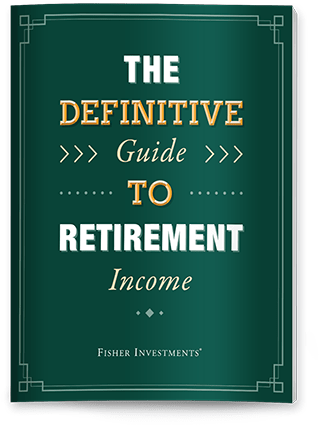Personal Wealth Management / In The News
Comparisons Get Carried Away
Some perspective on common headlines comparing April’s slide through Monday to 1932.
As ever when markets fall fast, Great Depression comparisons are starting to roll in. Tuesday morning, headlines and tweets far and wide cast this April’s decline to date in historical terms—painting the Dow’s drop this month through Monday’s close as “the worst April since 1932.” Such comparisons can easily rattle nerves. But this comparison is flawed—and amounts to mere trivia anyway. Getting caught up in it can be hazardous to your future financial health, in our view.
First, ignore the Dow. We mean literally. Always. It is a broken, narrow index of 30 companies. Broken how, you ask? Simple. It is price-weighted, meaning the stock with the highest share price moves the gauge the most. Not the biggest company. Just the one that happens to sport the highest share price. Goldman Sachs has the highest share price in the Dow today.[i]
The Dow is the oldest index, but oldest doesn’t mean best. Later creations, like the S&P 500 and MSCI World, are market-cap weighted. This takes the number of shares of each stock available for purchase and multiplies them by the price. Hence, each stock’s footprint in the market is proportional to its actual total value. Bigger firms matter more to movement; smaller firms less so. Today, Apple has the biggest market cap, some 20 times Goldman Sachs’s.[ii] It means more to these indexes’ moves. That is sensible. Highest share price, an arbitrary feature, isn’t.
So ditch the Dow. Is this the S&P 500’s worst April since 1932? Answer: No. It is the worst since … April 2022’s -8.72%.[iii] On a total return basis, the S&P 500 is down -8.02% this month to date through April 21’s close—history’s fifth-worst April.[iv] And a far cry from April 1932’s -19.75%.
But then, why stop at Aprils?
Through Monday, this month’s decline would rank as the 54th-worst month since good data start in January 1926. There are no doubt some historically bad periods among those 54. But there are also some mere corrections (short, sharp, sentiment-driven moves of -10% to -20%). Stocks fell -14.46% in August 1998.[v] Corrections in 1933 (after the Great Depression’s June 1932 low) make the list twice.[vi] There is December 2018.[vii] And while the Crash of 1987 makes the list twice (October and November), so does the non-crash of September 1986.[viii]
Our point here isn’t that April hasn’t been rough. It has. Or that it couldn’t get worse—it could. It isn’t even anything about the minutiae of historical month rankings.
It is this: These types of Depression comparisons, based on varying inputs, are common deep in corrections or bear markets. Often, comparisons to the 1970s or Japan’s “Lost Decades” follow. But comparisons like this are counterproductive, achieving little more than instilling fear. They tell you exactly nothing about what lies ahead, which is what really matters. Not where this current decline would rank on a historical list of entries. That is trivial. Your financial goals aren’t. Don’t let fearful, backward-looking chatter lead you astray.
[i] Source: FactSet, as of 4/22/2025.
[ii] Ibid.
[iii] Source: Finaeon, Inc., as of 4/22/2025. April 2022 S&P 500 total return.
[iv] Source: FactSet, as of 4/22/2025. S&P 500 total return, 3/31/2025 – 4/21/2025.
[v] Source: Finaeon, Inc., as of 4/22/2025. August 1998 S&P 500 total return.
[vi] Ibid. Those months were February and September 1933.
[vii] Ibid.
[viii] Ibid.
If you would like to contact the editors responsible for this article, please message MarketMinder directly.
*The content contained in this article represents only the opinions and viewpoints of the Fisher Investments editorial staff.
Get a weekly roundup of our market insights
Sign up for our weekly e-mail newsletter.

See Our Investment Guides
The world of investing can seem like a giant maze. Fisher Investments has developed several informational and educational guides tackling a variety of investing topics.




